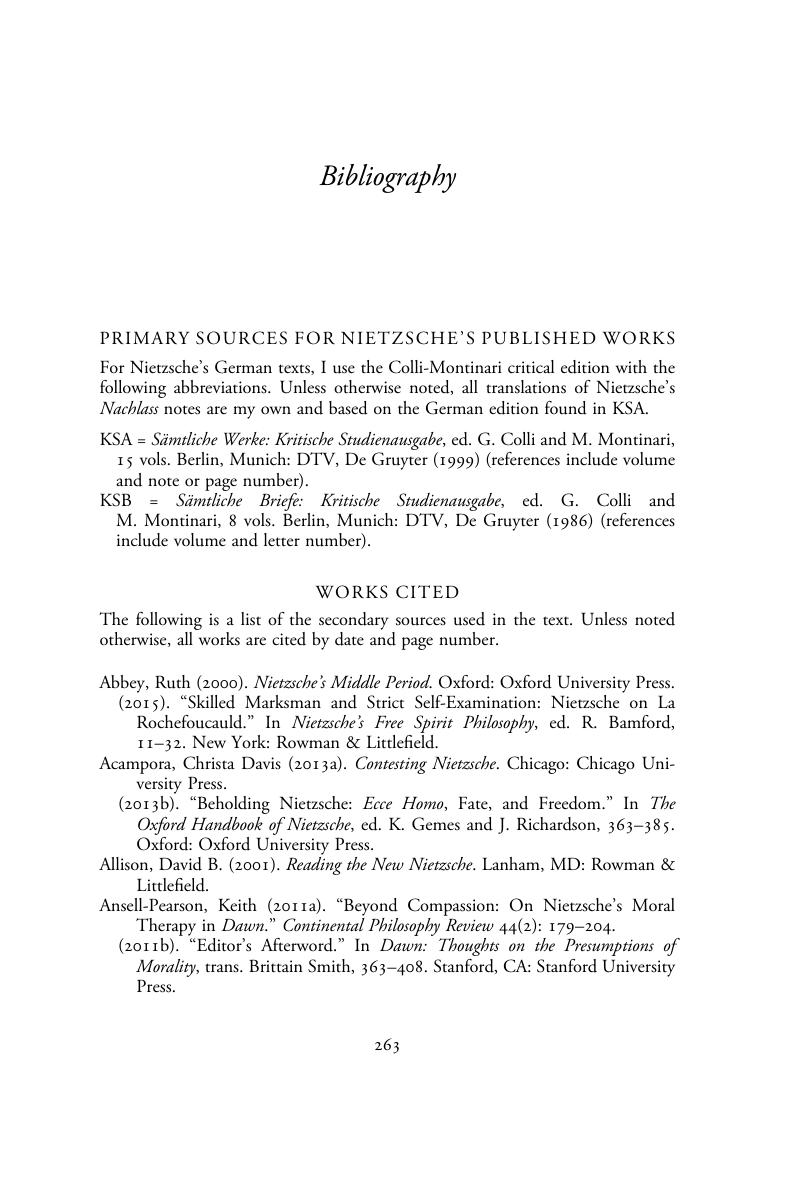Book contents
Bibliography
Published online by Cambridge University Press: 19 April 2019
Summary

- Type
- Chapter
- Information
- Nietzsche's Free Spirit WorksA Dialectical Reading, pp. 263 - 271Publisher: Cambridge University PressPrint publication year: 2019



